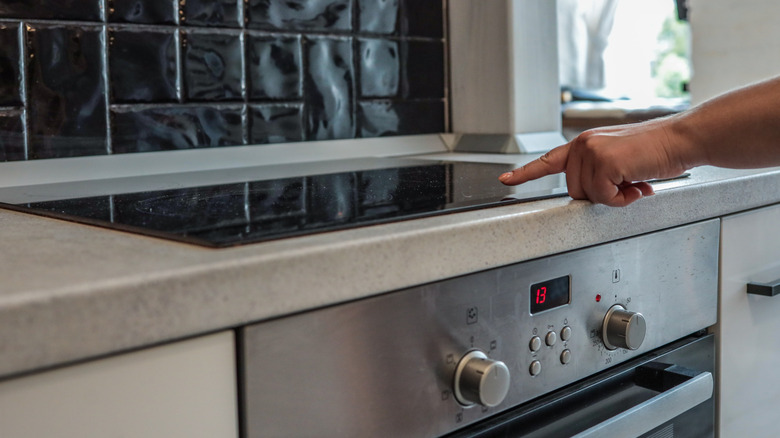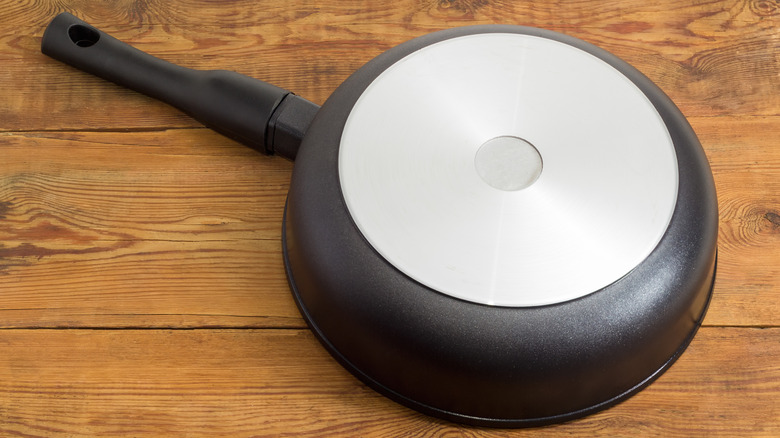Avoid Damaging Your Glass Stovetop By Only Using This Type Of Pan
A shiny glass stovetop is quite eye-catching. It's so sleek and perfect that you can almost see your reflection in it. That's exactly why no one wants one big ugly scratch coming and ruining that. But that's the risk, even if you keep your glass stovetop sparkling clean, as small scratches always seem to appear and tarnish it. But it doesn't have to be this way. In fact, you can avoid damaging your glass stovetop by only using pots and pans with a smooth and flat bottom.
Even with the risk of scratches, glass stovetops are popular, especially in modern kitchens, because they're considered safer. They allow you to cook with high heat without needing flames or gas. Glass cooktops are often associated with induction, a technology that's even safer because it only heats specific pots and pans, while leaving the actual glass cool to the touch and therefore reducing risks of fires. However, not all glass stovetops use induction, as some have radiating heating coils beneath the glass instead. With both technologies, preventing scratches on glass stovetops while cleaning and cooking is key and requires some careful planning.
The exact type of pot and pan that you choose depends largely on whether your glass stovetop uses induction or not, since these require cookware that will heat up using electromagnetic energy. In any case, look for pots and pans that without any texture on the bottom. For example, raw cast iron might cause some scratches because of its rougher texture, but enameled cast iron won't and will still work on all stovetops.
Which pans are right for your glass stovetop
As mentioned, the most important feature for pots and pans to use on a glass stovetop is a flat and smooth base. As such, stay away from things like raw cast iron, patterned and textured bases, or embossed logos. With glass stovetops, it's also best to avoid copper pans and pots, which can leave marks on the glass. Glass and ceramic pots are also at risk of breaking when used on glass stovetops, which can leave some nasty marks on the stovetop. And finally, don't use older pots with damaged and uneven bases.
If you're using a radiant or induction glass stovetop, you can safely use enameled cast iron, enameled steel, or carbon steel pots as long as they have a flat bottom. Stainless steel pots and pans are also a great choice, but they only work with induction if they have a magnetic base. Other types of basic stainless steel pans (which aren't magnetic) won't heat up on induction, but they can be safely used on other types of electric glass stovetops and tend to be a crowd favorite.
But keep in mind that even with these flat-bottomed pans, you shouldn't slide and drag cookware across a glass stovetop. To keep your glass stove in tip-top shape, it's best practice to use gentle cleaning solutions that are specifically designed for that purpose, and steer clear of scratchy and abrasive sponges and towels. To remove burnt-on food, use a scraper, which can lift the grime without requiring heavy scratching.

